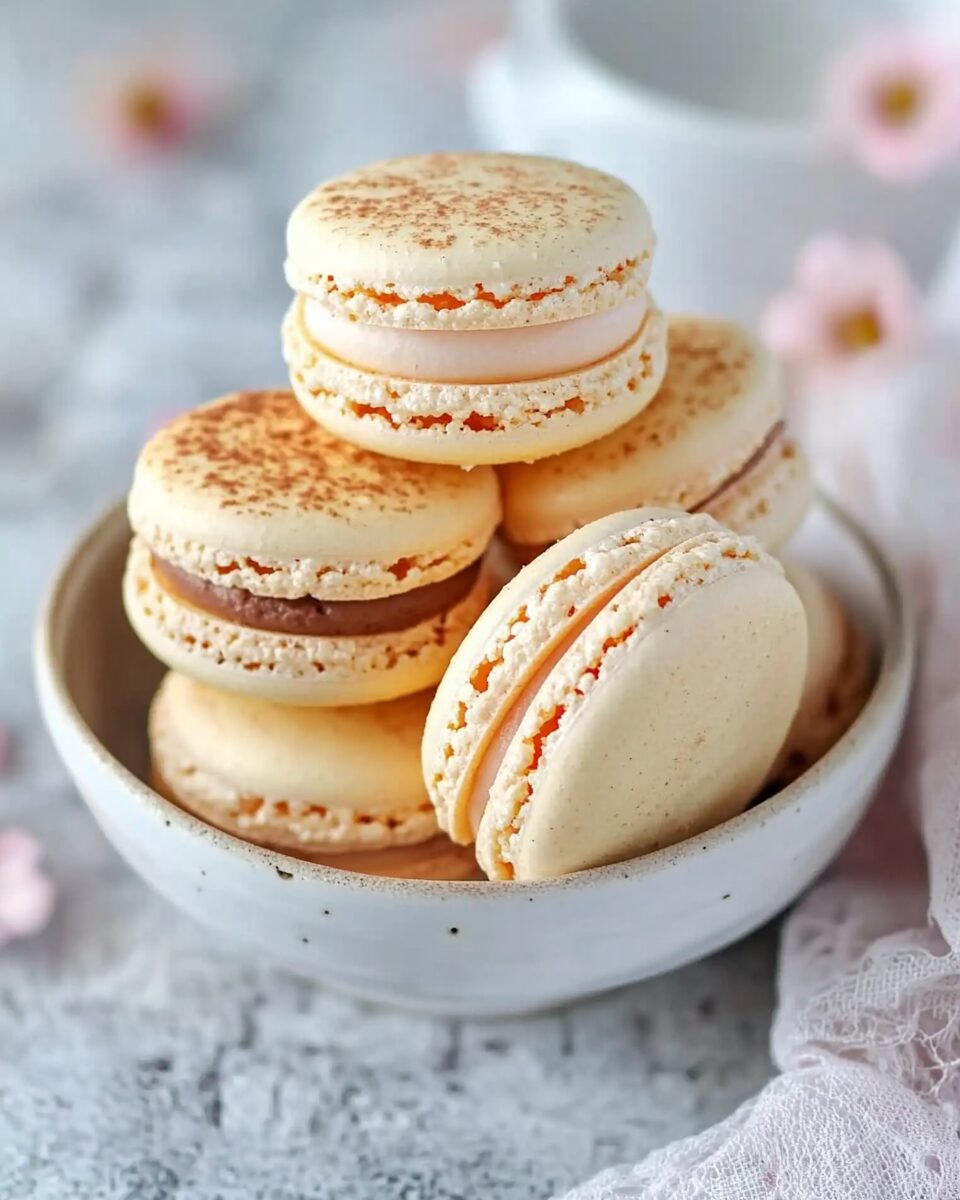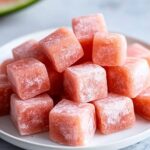The Origins and History of French Macarons
Macarons trace their origins back to Italy in the Middle Ages, brought to France by Catherine de Medici when she married King Henry II in the 16th century. The first macarons were simple almond cookies without filling, but over the centuries, French pastry chefs refined the recipe into the modern version we recognize today.
The double-shell macaron with a creamy filling was popularized by Ladurée in Paris during the early 20th century. Since then, French macarons have become an iconic confection, featured in patisseries around the world and often customized with different flavors, colors, and fillings.
Why French Macarons Are Unique
Making perfect macarons requires precision, patience, and the right techniques. Their unique appeal comes from:
- Light and Crisp Shells: The macaron shells have a delicate crisp outer layer, giving way to a slightly chewy interior.
- Signature “Feet”: The ruffled base of each shell, known as the “pied” (feet), is a hallmark of a well-made macaron.
- Balanced Sweetness: Unlike heavier cookies, macarons have a light sweetness that pairs well with a variety of fillings.
- Endless Flavor Combinations: While vanilla and chocolate are classic, macarons can be infused with fruits, nuts, floral essences, and even savory elements.
- Elegant Presentation: Their vibrant colors and smooth surfaces make them aesthetic and luxurious, perfect for gifting or special occasions.
The Key Ingredients and Their Roles
Each ingredient in macarons plays a crucial role in achieving the perfect texture and flavor.
- Egg Whites: Act as the base of the meringue, providing structure and volume to the batter. They must be aged for at least 24 hours to remove excess moisture.
- Almond Flour: Finely ground almonds create the smooth, delicate texture of the shells.
- Confectioners’ Sugar: Mixed with almond flour, it contributes to the soft, airy consistency of the macaron batter.
- Granulated Sugar: Stabilizes the egg whites and helps achieve a glossy, stiff meringue.
- Cream of Tartar: Adds stability to the meringue, preventing overwhipping or collapse.
- Butter (for Buttercream): Forms the creamy, rich filling that balances the crispness of the macaron shells.
- Vanilla Extract: Provides a delicate floral sweetness, but can be substituted with other flavorings for variety.
Best Ways to Serve French Macarons
Macarons are versatile and can be enjoyed in multiple ways, whether as a standalone treat or paired with complementary desserts and drinks.
1. Classic Afternoon Tea Pairing
Macarons pair beautifully with tea, making them a perfect choice for an afternoon tea spread. Serve them alongside:
- Earl Grey or Jasmine Tea for a floral contrast.
- Chamomile Tea for a delicate and mild pairing.
- Matcha or Green Tea to balance the sweetness of the macarons.
2. Macaron Dessert Platter
For a decadent dessert table, arrange macarons alongside:
- Chocolate truffles for a rich contrast.
- Fresh berries and whipped cream for a fruity complement.
- Petit fours or madeleines for an assortment of delicate pastries.
3. Special Occasion Treats
French Macarons are ideal for elegant events, celebrations, and gifts. Customize them with:
- Edible gold dust or metallic sprinkles for weddings.
- Themed colors and fillings for baby showers or birthdays.
- Personalized packaging for party favors or gourmet gifts.
Perfect Drink Pairings
Pairing macarons with the right beverage enhances their delicate sweetness. Some excellent choices include:
- Champagne or Sparkling Wine – The bubbles contrast the richness of the buttercream.
- Espresso or Cappuccino – The bitterness of coffee complements the light sweetness of the macaron shells.
- Rosé Wine – A light, fruity rosé pairs beautifully with vanilla and berry-flavored macarons.
Storage and Make-Ahead Tips
Macarons are best when allowed to mature for 24-48 hours, as the filling melds into the shells, creating the signature chewy, crisp texture.
- Refrigeration: Store in an airtight container in the fridge for up to 5 days. Let them sit at room temperature for 20 minutes before serving.
- Freezing: Macarons freeze well. Store filled macarons in an airtight container and freeze for up to 2 months. Thaw in the fridge overnight.
- Avoid Humidity: Moisture affects macaron texture. Store them in a cool, dry place, especially before serving.
Common Mistakes to Avoid
Mastering macarons takes practice, but avoiding these mistakes increases the chances of success:
- Overmixing or Undermixing the Batter: The macaronage process should result in a batter that flows like lava. If it’s too thick, macarons won’t spread; if too runny, they’ll lose their shape.
- Skipping the Resting Step: Letting the piped shells rest before baking helps them develop their signature smooth surface and ruffled feet.
- Overbaking or Underbaking: Proper baking ensures firm, slightly chewy shells. Overbaking makes them too crisp, while underbaking leaves them hollow or sticky inside.
- Not Using Aged Egg Whites: Fresh egg whites contain too much moisture, which can affect the stability of the meringue. Aging them overnight or up to 24 hours results in better structure.
Why You Should Try This Recipe
- Master a Classic French Pastry: Learning to bake macarons is a rewarding challenge that refines baking skills.
- Beautiful and Elegant: Their vibrant colors and delicate design make them ideal for gifting and special occasions.
- Endless Flavor Possibilities: Once you master the basics, you can experiment with unique flavors like lavender, salted caramel, or matcha.
- Perfect Balance of Texture and Flavor: The contrast between crisp shells and creamy filling makes each bite a luxurious experience.
Conclusion
French Macarons are more than just a dessert—they are an art form that combines precision, patience, and creativity. With their delicate crispness, chewy interior, and luscious buttercream filling, macarons are a timeless classic that continues to captivate pastry lovers worldwide.
While making macarons requires skill and technique, the results are incredibly rewarding. Once mastered, these delicate treats can be customized with endless flavors and colors, making them perfect for celebrations, elegant gifts, or simply indulging in a luxurious bite of French pâtisserie magic.
Give this recipe a try, and experience the joy of creating homemade macarons—a true testament to the beauty and sophistication of French baking!






